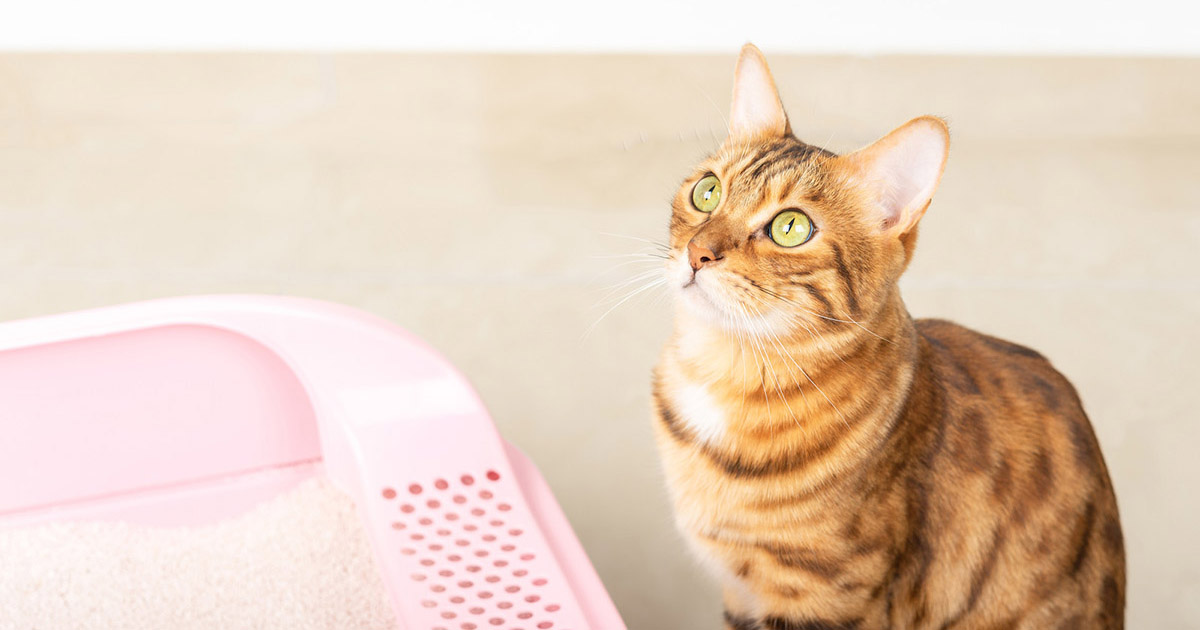What're your ideas regarding Don’t flush cat feces down the toilet?

Intro
As feline proprietors, it's necessary to bear in mind exactly how we throw away our feline close friends' waste. While it may appear convenient to purge feline poop down the bathroom, this method can have damaging effects for both the atmosphere and human health and wellness.
Ecological Impact
Flushing cat poop introduces unsafe microorganisms and parasites into the water, posing a substantial risk to water communities. These contaminants can adversely impact aquatic life and compromise water top quality.
Health and wellness Risks
In addition to ecological problems, purging feline waste can additionally present wellness threats to humans. Feline feces may consist of Toxoplasma gondii, a bloodsucker that can cause toxoplasmosis-- a potentially extreme illness, especially for pregnant females and people with weakened immune systems.
Alternatives to Flushing
Fortunately, there are much safer and much more liable methods to take care of cat poop. Think about the complying with options:
1. Scoop and Dispose in Trash
One of the most usual method of dealing with cat poop is to scoop it into a biodegradable bag and throw it in the trash. Be sure to utilize a dedicated trash scoop and dispose of the waste quickly.
2. Usage Biodegradable Litter
Choose biodegradable cat trash made from products such as corn or wheat. These trashes are eco-friendly and can be securely gotten rid of in the trash.
3. Bury in the Yard
If you have a yard, think about burying cat waste in an assigned area far from veggie yards and water resources. Make sure to dig deep adequate to stop contamination of groundwater.
4. Install a Pet Waste Disposal System
Purchase a pet waste disposal system particularly designed for cat waste. These systems use enzymes to break down the waste, minimizing odor and environmental impact.
Conclusion
Responsible animal ownership expands past offering food and sanctuary-- it likewise entails appropriate waste management. By refraining from flushing feline poop down the bathroom and selecting alternative disposal approaches, we can reduce our ecological footprint and shield human health and wellness.
Why Can’t I Flush Cat Poop?
It Spreads a Parasite
Cats are frequently infected with a parasite called toxoplasma gondii. The parasite causes an infection called toxoplasmosis. It is usually harmless to cats. The parasite only uses cat poop as a host for its eggs. Otherwise, the cat’s immune system usually keeps the infection at low enough levels to maintain its own health. But it does not stop the develop of eggs. These eggs are tiny and surprisingly tough. They may survive for a year before they begin to grow. But that’s the problem.
Our wastewater system is not designed to deal with toxoplasmosis eggs. Instead, most eggs will flush from your toilet into sewers and wastewater management plants. After the sewage is treated for many other harmful things in it, it is typically released into local rivers, lakes, or oceans. Here, the toxoplasmosis eggs can find new hosts, including starfish, crabs, otters, and many other wildlife. For many, this is a significant risk to their health. Toxoplasmosis can also end up infecting water sources that are important for agriculture, which means our deer, pigs, and sheep can get infected too.
Is There Risk to Humans?
There can be a risk to human life from flushing cat poop down the toilet. If you do so, the parasites from your cat’s poop can end up in shellfish, game animals, or livestock. If this meat is then served raw or undercooked, the people who eat it can get sick.
In fact, according to the CDC, 40 million people in the United States are infected with toxoplasma gondii. They get it from exposure to infected seafood, or from some kind of cat poop contamination, like drinking from a stream that is contaminated or touching anything that has come into contact with cat poop. That includes just cleaning a cat litter box.
Most people who get infected with these parasites will not develop any symptoms. However, for pregnant women or for those with compromised immune systems, the parasite can cause severe health problems.
How to Handle Cat Poop
The best way to handle cat poop is actually to clean the box more often. The eggs that the parasite sheds will not become active until one to five days after the cat poops. That means that if you clean daily, you’re much less likely to come into direct contact with infectious eggs.
That said, always dispose of cat poop in the garbage and not down the toilet. Wash your hands before and after you clean the litter box, and bring the bag of poop right outside to your garbage bins.
https://trenchlesssolutionsusa.com/why-cant-i-flush-cat-poop/

Do you like more info about How to Dispose of Cat Poop and Litter Without Plastic Bags? Leave feedback down the page. We'd be delighted to listen to your feelings about this blog entry. We are looking forward to see you back again in the near future. Do you know about anybody else who is in to Don’t flush cat feces down the toilet? Feel free to share it. We appreciate reading our article about How to Dispose of Cat Poop and Litter Without Plastic Bags.
Book Your Appointment
Comments on “Reasons You Mustn't Flush Cat Poop Down Your Toilet - Maintain Your Pipe Health”